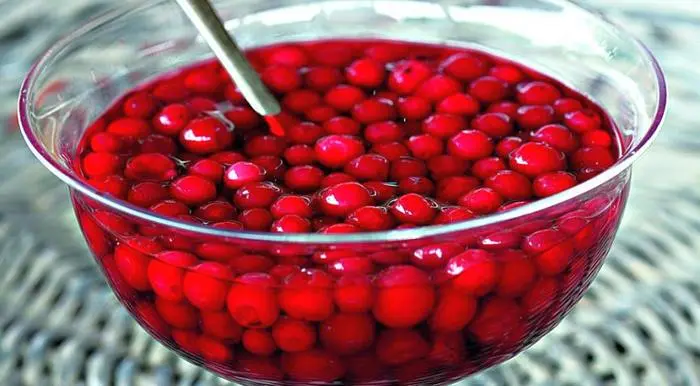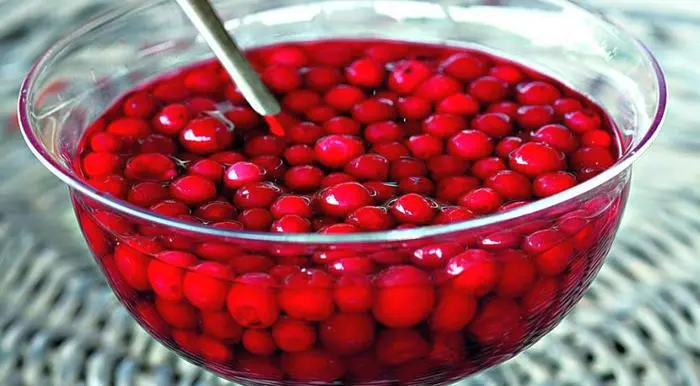Contents
- How and where to properly store lingonberries at home, in the cellar and in winter
- Storage at room temperature
- Storing frozen lingonberries
- Basement or cellar storage
- Storing soaked lingonberries
- Storing canned lingonberries with sugar
- Storing steamed lingonberries
- Storage in its own juice
- Jelly storage
- Storage of dried lingonberries

How and where to properly store lingonberries at home, in the cellar and in winter
Lingonberries germinate in May, and harvest is necessary in August or September. Ripe lingonberries have a bright red or juicy pink color, have a sweet and sour taste and have the most useful properties. That is why the question often arises of how to properly store lingonberries so that they retain all their useful properties for a long time and do not deteriorate.
Contents:
- Storage at room temperature
- Storing frozen lingonberries
- Basement or cellar storage
- Storing soaked lingonberries
- Storing canned lingonberries with sugar
- Storing steamed lingonberries
- Storage in its own juice
- Jelly storage
- Storage of dried lingonberries
Storage at room temperature
Shelf life: 10 days
Fresh and at home at temperatures from 18C to 25C degrees, lingonberries are able to retain their beneficial properties for 10 days, without any heat treatment. Just rinse the lingonberries thoroughly and place them in a wicker basket or other convenient container, preferably a wooden one.
Storing frozen lingonberries
Shelf life: 2-4 months
The most common way to store lingonberries for a long period is to freeze them.
To do this:
- Carefully sort out the berries of the lingonberry, discard the unripe, overripe and rotten fruits, since only ripe and whole lingonberries are subject to high-quality freezing. Good lingonberries are always strong and with a thick skin – they should not shrink when pressed lightly;
- Rinse lingonberries in cold water;
- Put on a towel or dry with a colander;
- Place dried berries in plastic containers or a tightly resealable bag;
- Place in the freezer for storage.
[vc_message color = ”alert-info”] Sometimes there are problems with full drying of lingonberries, so we recommend freezing them in two stages. To begin with, the berries, pouring them into one small layer on a tray or container, place them in the freezer to freeze. After freezing, pour them into a plastic bag, tie tightly and place them back in the freezer. [/ vc_message]
Basement or cellar storage
Shelf life: 3 months
A temperature of 3-5 degrees Celsius is ideal for storing fresh lingonberries. These conditions can be achieved by storing berries in a dark basement or cellar with moderate humidity. To do this, pour lingonberries with cold boiled water, and in case of severe frosts, drain the water and place the berries in a wooden container or basket. Under such storage conditions, lingonberries retain their useful properties and taste as much as possible.
Storing soaked lingonberries
Shelf life: 2-12 months

Soaking lingonberries is one of the most popular ways to keep them fresh, as they can retain their beneficial properties for a long time.
First you need to sort out ripe and whole berries and rinse them in cold boiled water, pour them onto a sieve and wait until the water drains. For a liter of water where lingonberries will be stored, you need a couple of tablespoons of sugar and half a teaspoon of salt, add cloves and cinnamon and boil for about 10 minutes, then cool.
Then place the berries in a glass jar and fill them with the resulting syrup in a ratio of 1: 2, respectively, close with a tight lid and store in a refrigerator or basement. After 2 months, the berries will become soft, you get reddish lingonberry water, which perfectly quenches thirst, improves metabolism and relieves hangovers.
Storing canned lingonberries with sugar
Shelf life: 1 week
Rinse the berries, clear of debris and pour into a glass jar without drying. Then fill it with half a glass of sugar, cover and store in a dark place for about a week. The volume of the resulting mixture will decrease, but it can be increased by adding more berries and sugar at your discretion.
Storing steamed lingonberries
Shelf life: 12 months
Sort the berries out of debris, rinse in cold water, put in a saucepan, close the lid and put in the oven for about 2 hours. During these 2 hours, the lingonberry will acquire a disgusting gray color and significantly decrease in volume. After steaming, transfer the berries to glass jars, close the lids and place in a basement or refrigerator.
Storage in its own juice
Shelf life: 4-6 days
Rinse lingonberries thoroughly, dry on a towel or colander and place in jars so that each of them is no more than 1/3 full. After that, press the berries on top with a wooden spoon with such force that the juice begins to stand out.
Once you have squeezed out all the juice from the first layer, pour another layer of lingonberries on top and continue to squeeze out the juice, adding new berries over the top until the jars are full. Place the lid on the jars and let them sit for a few days. Later, the level of the mixture in the containers will become lower, after which, if you wish, you can refill the containers with berries and place them in the refrigerator.
Jelly storage
Shelf life: 3-4 days
To begin with, the sorted and washed lingonberries are boiled in their own juice (you already know how to get the juice from the previous point) in a frying pan until the berries burst. After that, the resulting mixture must be filtered through a clean cloth, for example, cheesecloth, and pour sugar into the resulting lingonberry juice at the rate of 5 cups of sugar for 4 cups of lingonberries. Then boil the mixture again, cool and pour into jars for further storage in the refrigerator.
Storage of dried lingonberries
Shelf life: 12 months
To obtain dried lingonberries, it is necessary to separate ripe from underripe berries, leaves and other debris. Then preheat the oven to 60 degrees Celsius and spread the lingonberries in a thin layer on a baking sheet, then place them in the oven. So that the berries do not burn, you need to stir them from time to time. After complete drying, pour the lingonberries into a jar, cover with a lid and place in a dark place for further storage.
Dried lingonberry practically does not lose its useful properties, and it can be used for preparing various dishes and drinks.
[vc_message color = ”alert-success”] Lingonberry is included in the list of the most useful berries sprouting in Russia. It is not only tasty, but also effective for the prevention and treatment of many diseases. It can be added to a wide variety of foods and drinks. You can read about the benefits and dangers of this berry on our website here. [/ Vc_message]









